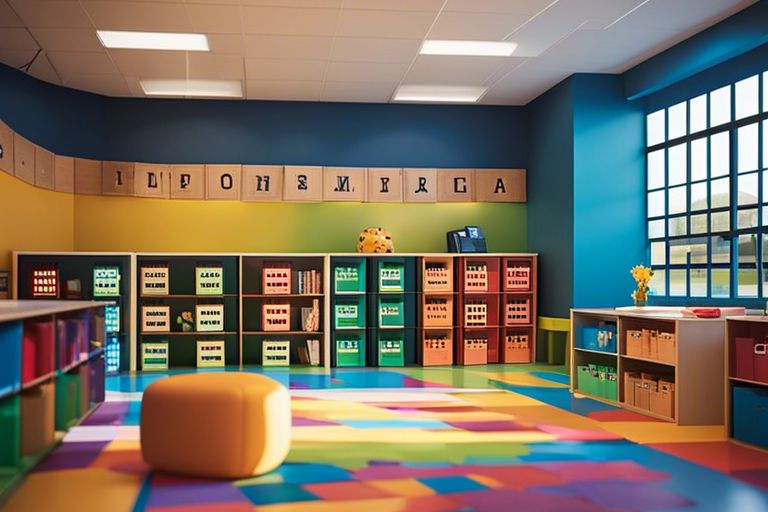There’s a reason why phonics is widely regarded as the cornerstone of learning to read. Phonics, the method of teaching reading and writing by developing a learner’s phonemic awareness, is crucial for decoding words and understanding their meanings. By mastering phonics, individuals can break down unfamiliar words, improve their spelling, and enhance their reading comprehension. In this blog post, we will investigate the importance of phonics in early literacy development and its impact on fostering strong reading skills.
Key Takeaways:
- Phonics is crucial for learning to read: Phonics teaches the relationship between letters and sounds, enabling children to decode words when reading.
- Builds strong literacy foundation: Phonics instruction helps children understand the principles of language, leading to improved reading fluency and comprehension.
- Enhances spelling and writing skills: Children can spell words correctly by mastering phonics and transferring this knowledge to their writing, improving overall literacy skills.
- Boosts vocabulary development: Phonics instruction helps children recognize and understand new words by breaking them down into phonemes and making connections to their meanings.
- Supports reading confidence and independence: With phonics skills, children can confidently tackle unfamiliar words, leading to increased reading proficiency and a lifelong love for reading.
Understanding Phonics
Definition and Key Concepts
One of the critical components of early reading instruction is phonics, a method that teaches the correspondence between sounds in spoken language and the letters that represent those sounds in written language. Phonics helps children decode words by understanding the relationship between letters and sounds.
To develop strong phonics skills, students must grasp critical concepts such as understanding the difference between consonants and vowels, recognizing letter-sound relationships, and learning phonemic awareness – hearing, identifying, and manipulating individual sounds in spoken words.
The History and Evolution of Phonics Instruction
To understand the importance of phonics today, exploring its historical roots is essential. Phonics instruction has a long history dating back to ancient civilizations but gained prominence in modern education during the 17th and 18th centuries with the development of more systematic methods for teaching reading.
Concepts like phonemic awareness and phonics rules have evolved, with research and educational practices continuously refining the approach to best support early literacy development.
Definition: Phonics instruction involves teaching students the relationship between letters of written language and the individual sounds of spoken language. This method enables students to decode unfamiliar words by sounding them out based on their letter-sound correspondences, providing a foundational skill for reading fluency and comprehension.
Phonics as the Foundation for Reading
Some of the most fundamental principles of learning to read are based on phonics. Phonics is the relationship between sounds and their corresponding letters or letter combinations in language. Understanding phonics is crucial for young children as it gives them the tools to decode words and develop reading fluency.
The Relationship Between Phonics and Reading Ability
Any educator will tell you that a strong foundation in phonics is essential for developing reading skills. When children grasp the connection between letters and sounds, they can more easily recognize words, pronounce them correctly, and comprehend the text they are reading. Phonics instruction helps students break down unfamiliar words, improve spelling, and enhance reading comprehension.
Research has shown that students who receive systematic and explicit phonics instruction tend to become more proficient readers than those who do not. By teaching phonics in a structured manner, educators can effectively equip students with the necessary skills to become independent readers and lifelong learners.
Comparative Effectiveness of Phonics Teaching Methods
| Traditional Phonics Instruction | Whole Language Approach |
| It focuses on teaching the relationship between letters and sounds systematically. | Emphasizes learning through context and whole words rather than breaking down words into individual sounds. |
| Provides explicit instruction in phonemic awareness, phonics rules, and decoding skills. | Encourages students to guess words based on surrounding text and pictures. |
| It is highly effective in helping students develop strong reading skills. | This may lead to confusion and struggles with decoding unfamiliar words. |
Research consistently shows that traditional phonics instruction is more effective in helping students become proficient readers when comparing different phonics teaching methods. By focusing on the explicit teaching of phonetic rules and decoding strategies, students are better equipped to tackle new words and improve their overall reading fluency.
Methods
| Explicit Phonics Instruction | Embedded Phonics Instruction |
| Directly teaches students the relationship between letters and sounds. | Incorporates phonics instruction into reading and writing activities without separate lessons. |
| Provides structured lessons on phonemic awareness, phonics rules, and decoding strategies. | Allows students to learn phonics naturally through exposure to written text. |
| It has been proven to be highly effective in improving reading skills. | It may be less effective for students who struggle with phonemic awareness. |
Implementing Phonics Instruction
Unlike other methods of teaching reading, phonics instruction is considered the foundation for learning to read because it teaches children the relationship between letters and sounds. Implementing phonics instruction effectively can significantly improve a child’s ability to decode and comprehend written language.
Strategies for Teaching Phonics
With phonics instruction, teachers can use various strategies to help students grasp the concept of letter-sound correspondence. One effective strategy is using phonics games and activities to make learning enjoyable and engaging. For example, word sorts, phonics puzzles, and interactive phonics apps can reinforce phonics skills in a fun and interactive way.
Another strategy is providing explicit and systematic phonics instruction. This involves teaching students the rules and patterns of the English language in a clear and structured manner. By following a sequence that starts with essential letter-sound relationships and progresses to more complex phonics rules, students can build a solid foundation for reading.
Common Challenges and Solutions
Teachers can provide targeted intervention and support to address common challenges in phonics instruction, such as students struggling with specific phonics rules or sounds. One solution is to offer small group instruction or one-on-one tutoring to focus on specific areas where students need extra help.
Another common challenge is maintaining student engagement during phonics lessons. Teachers can incorporate multisensory activities that appeal to different learning styles to overcome this. For example, including visual aids, hands-on manipulatives, and auditory cues can enhance the learning experience and keep students actively involved in their phonics instruction.
Teaching phonics effectively involves teaching the rules and patterns of the English language and addressing each student’s individual needs and challenges. By implementing various strategies and addressing common challenges with targeted solutions, teachers can help students develop strong phonics skills and achieve success in reading.
Beyond Phonics
Integrating Phonics with Other Reading Approaches
Keep in mind that phonics is just one piece of the puzzle when it comes to teaching children how to read. Integrating phonics with other reading approaches can help reinforce literacy skills and make learning more engaging.
By combining phonics with strategies such as sight word recognition, whole language instruction, and comprehension activities, educators can provide a comprehensive approach to reading instruction that caters to different learning styles and abilities.
Preparing for Advanced Literacy Skills
On the journey to advanced literacy skills, it’s essential to go beyond the basics of phonics and focus on more complex reading strategies. SStudents can develop higher-level skills necessary for comprehension and critical thinking by building on a solid phonics foundation by building on a solid phonics foundation.
Preparing for advanced literacy skills involves honing vocabulary development, fluency, and reading comprehension. These skills are crucial for students to become proficient readers who can understand and analyze various texts.
Preparing for Advanced Literacy Skills
| Skills | Description |
| Vocabulary Development | Expanding knowledge of words and meanings to enhance comprehension |
| Fluency | Reading smoothly with accuracy, expression, and at an appropriate pace |
| Reading Comprehension | Understanding and interpreting texts to extract meaning and analyze content |
Beyond Phonics
Beyond phonics, advanced literacy skills are essential for students to excel in reading and academics. While phonics provides the foundation, it’s the integration with other reading approaches and the development of higher-level skills that genuinely elevate a child’s reading abilities.
| Key Points | Details |
| Phonics Foundation | Provides the building blocks for reading by teaching letter-sound relationships |
| Integration with Other Approaches | Enhances literacy instruction by combining phonics with sight words, whole language, and comprehension strategies |
Summing up
On the whole, phonics is the foundation for learning to read because it provides the essential building blocks for decoding words and understanding language. By teaching the relationship between sounds and letters, phonics equips children with the skills to sound out words, recognize patterns, and improve their reading comprehension. Research has consistently shown that a strong foundation in phonics leads to better reading fluency and comprehension, laying the groundwork for academic success. Additionally, phonics instruction can help students become more confident and independent readers, fostering a lifelong love for reading and learning.
FAQ
Q: Why is phonics considered the foundation for learning to read?
A: Phonics is the foundation for learning to read because it teaches the relationship between letters and sounds. By understanding these relationships, readers can decode words accurately and fluently.
Q: What is phonics instruction?
A: Phonics instruction is a method of teaching reading that focuses on the sounds of letters and letter combinations. It helps students understand the alphabetic principle and how letters represent speech sounds.
Q: How does phonics benefit early readers?
A: Phonics helps early readers develop decoding skills essential for reading fluency and comprehension. It also helps build vocabulary and improve spelling abilities.
Q: Are there different approaches to teaching phonics?
A: Yes, there are different approaches to teaching phonics, including synthetic phonics, analytical phonics, embedded phonics, and analogy-based phonics. Each approach has strengths and is used based on the learner’s needs.
Q: How can parents support phonics instruction at home?
A: Parents can support phonics instruction at home by reading with their children, practising phonics-based activities, playing word games, and providing opportunities for their children to apply phonics skills in real-life reading situations. Consistent practice and reinforcement are essential to mastering phonics skills.












